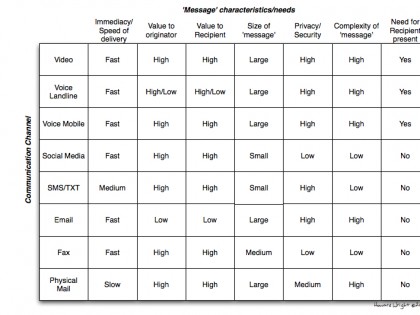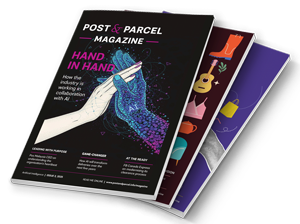
A stack of communications
One of the benefits of working in consultancy is the sustainability of ideas and concepts. Way back when I was working in Royal Mail I produced and maintained a 25-year predictive communications model of the UK – something I wouldn’t like to do today!
One of the concepts we looked at as part of this modeling was the idea of the ‘value’ of the different types of communications channels that were available. Having come from a telecommunications background I used the OSI stack as a template and produced a communications value stack. The idea of this simple stack is that when someone wants to initiative a communication they go through some sort of decision process to decide what method of communication would be the most appropriate and get the desired result – whether that be a simple response, an answer, or just to be noticed.
Earlier this week the opportunity came to dust off this concept and see if it was still valid today in the multichannel communications world we live in.
So the concept is that all the different modes of communication have characteristics and value to either the sender or the  receiver. The diagram is an attempt at codifying these characteristics and values. This is very much a fist pass at putting together the current stack and I would welcome comments on its efficacy or relevance today.
receiver. The diagram is an attempt at codifying these characteristics and values. This is very much a fist pass at putting together the current stack and I would welcome comments on its efficacy or relevance today.
When the concept was first conceived it was to look at how letters, which appeared at the bottom of the stack, could be moved further up the stack by giving them new attributes and values from the other modes of communication. Today, I think it can be more widely used to find white spaces for new communications opportunities.
The concept of the communications value stack can be used to look at the suitability for different types of transactions, for different types of customers, different generation and many more areas. One I am currently very interested in is the question ‘is the stack different for different cultures?’ – this follows on from some work I was doing in the US looking at the cultural differences with reference to recruitment and retention – particularly around millennials.
Is this a useful way of looking at the way we communicate? If you would like to explore further please get in touch.









